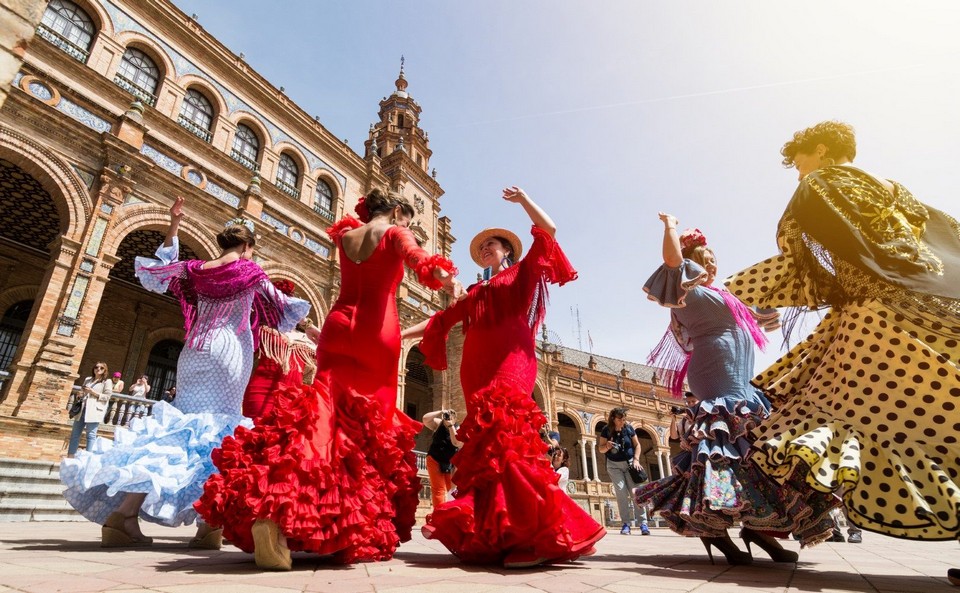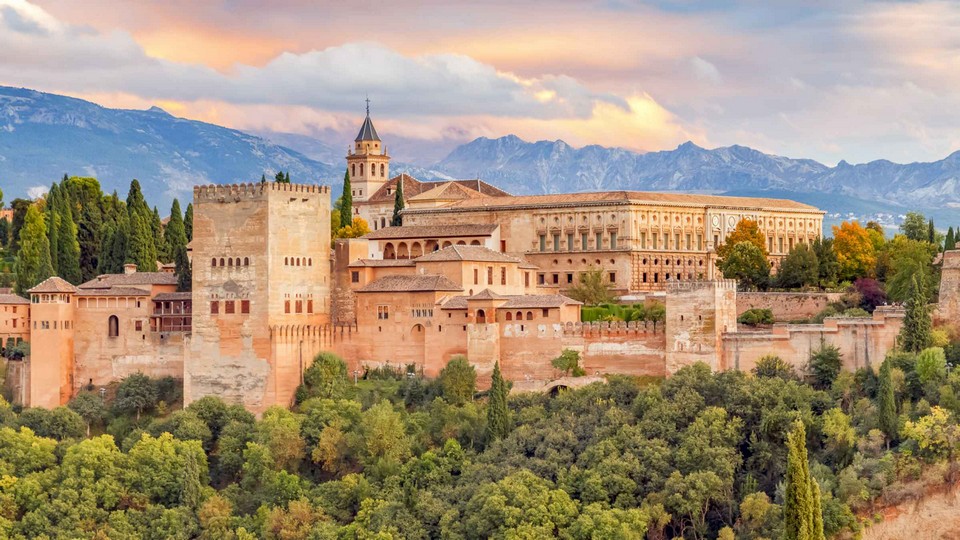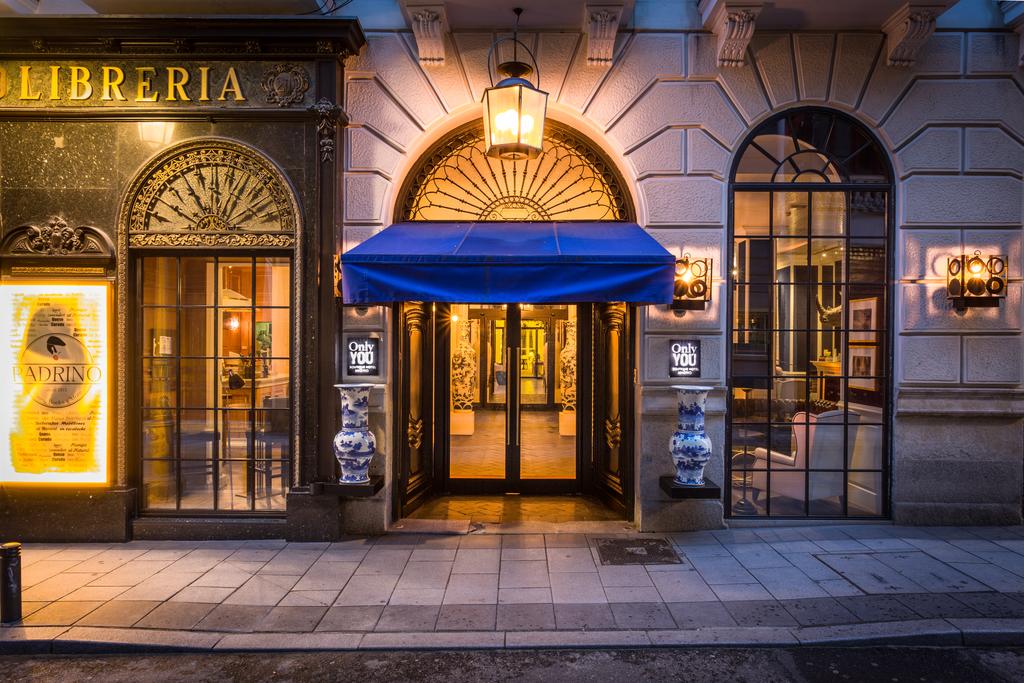Spain is a top holiday destination and the 2nd most visited country in the world. Once a powerful empire in the past, Spain has a long-standing history, the diversity of different cultures, unique architecture, delectable cuisine and weather favoured. The diversity of cuisine with rich flavor served with premium fragrant wine. During the festive season in Spain you will be immersed yourself in vibrant flamenco dances, tomato throwing festival – La Tomatina or the excitement of thrilling bullfights. All make Spain is a dream destination for any visitor. So, what to do and how to plan a perfect budget trip to Spain for the first-time? Let’s check out our Spain travel blog (Spain blog) with the fullest Spain travel guide (Spain guide, Spain tourist guide, Spain visitor guide) from how to get there, best time to come, where to stay, best places to visit and top things to do to find out the answer!
- 14+ best places to visit in Barcelona
- What to buy in Spain? — Top +18 souvenirs & best things to buy in Spain
- What to buy in Barcelona? — Top 15+ must-have souvenirs, gifts & best things to buy in Barcelona
- Taiwan itinerary 6 days — The itinerary of a trip to Taipei – Hualien – Kaohsiung for 6 days 5 nights
- Ronda blog — The fullest Ronda travel guide for first-timers



Spain travel blog: Overview of Spain
Spain, whose full name is the Kingdom of Spain, is located on the Iberian Peninsula in southwestern Europe. With an area of more than 500,000 square kilometers and a population of nearly 47 million people, Spain’s southern and eastern parts are bounded by the Mediterranean Sea, a small part of which is bordered to the south by British Gibraltar, bordered by France and Andorra to the northeast, Portugal to the west, northwest and the northern part is bordered by the Atlantic Ocean and the Gulf of Biscay (Bay of Biscay). In addition, the territory of Spain also includes many islands located in the Atlantic Ocean and the Mediterranean Sea.


Spain is a multilingual country. Spanish is also different in each region and is recognized as the official national language, in addition, English and German are also widely used. Roman Catholicism is the main religion of Spain, but due to immigration over the centuries, Hinduism, Buddhism, Sikhism and Islam are also gradually gaining support and widely accepted.

Spain travel blog: When to visit?

As the second largest country in Europe by area and with a diverse topography, the climate in each region of Spain can be very different. The southern and eastern coastal regions favoring by the Mediterranean climate, so the weather is very pleasant all year round. The north is usually colder than the south, while the central Spain will be drier and hotter.


If you want a sunny beach vacation, the period from June to August is the best time to come, but this is also the peak tourist season so you need to be prepared that the number of tourists flocking here will very crowded and prices may be higher than usual. Spain’s low season is usually late spring and late autumn, April, May, October and November. At this time the number of tourists will decrease but the weather is still very pleasant.

Spring (March – May): The spring climate in Spain is quite comfortable, especially in the mainland when the weather is getting warm but not too hot. This is a great time to visit major cities such as Madrid, Cordoba, and Seville because the groups of travelers have not yet come back too crowded.

Summer (June – August): This is the peak tourist season in Spain, cities located deep in the southern territory like Seville, Malaga or Cordoba will be extremely hot and dry. This is the good time for you to visit northern cities like San Sebastian, Santiago de Compostela or Galicia to avoid the heat of summer.


Autumn (September – October): The weather in this season is pleasant with some rain in October. This is probably the last time of year when you can visit the beaches in southern Spain before they close for winter.

Winter (November – February): Winter is a great time for skiing in the North. However, the weather is often very cold with thick snow, so before visiting Spain this season, you need to make sure the roads are still open.


You also can attend the San Fermín bull-running festival in Pamplona which takes place on July 4-7 every year. If you have an opportunity to visit Spain at this time, you should attend this festival to experience the thrill, to seeing the bravery of the people here. If you have not witnessed the bullfights or this bull running festival, you have not really experienced the full culture of the Spanish people. This is the most unique festival of the year in Spain that you should attend.

If you have the opportunity, you should also attend the annual La Mercè Festival Barcelona (“Castellers”) – human towers festival which is held for around five days in honor of the patron saint La Merce (the Virgin of Mercy). The prominent Spanish event will held at the end of September every year (around Sept 24) in the city of Barcelona.

Or attend the Spain’s weirdest festival – the festival of throwing tomatoes called La Tomatina to enjoy the feeling of dirty play of the Spanish people. It takes place on the last Wednesday of August in the town of Bunol, Valencia.
Read more: Spain itinerary 10 days — What to do & How to spend 10 days in Spain perfectly?
Spain travel blog: Getting to Spain
The easiest and most convenient way to get to Spain is by air. There are many direct flights from major U.S., Asian, European cities to Spain’s major cities of Madrid or Barcelona operated by big airlines such as United, American, Etihad, Emirates, Air France, Turkish Airline, Singapore Airlines… Depending on your departure point, you can find the suitable flights on schedules, routes via websites: Google Flights, Skyscanner, Kayak. Usually, travellers will landing at Madrid airport (Adolfo Suárez Madrid-Barajas Airport ) first before visiting other Spain cities on their Spain itinerary.

There are 4 terminals in Madrid Airport, each terminal has a 24-hour shuttle bus service which running to the central area of Atocha and Plaza de Cibeles for EUR 5/way. Taking the shuttle bus will be more convenient than taking the metro. If you want to take the metro, you have to go to terminal 2 to find Aeropuerto station, the price will be EUR 4.5/single-trip or more, depending on which station you arrive, the price will increase.


In addition, you also can reach Spain via ferry (see ferry routes here) and especially by train which is very convenient to traveling within European due to the train systems of European countries are very modern and develop, well-connected between regions, cities within Euro zone. You can refer to train timetables and routes to get to Spain here.
Spain blog: Getting around Spain
Subway (Metro)
To getting around the city of Madrid and its surrounding areas, the metro is a good choice for you. Metro is a fairly popular means of transport in Spain because of its speed, convenience and very cheap price. With only 1 euro you can travel comfortably in that route without limiting the number of travel times. If you travel a lot, you can buy a 10-Journey Tickets Metrobus for about 7.4 euros (With this type of ticket you can travel with 10 tram lines and even EMT bus lines).

Public transport tickets: Do not buy single tickets with the price of more than 2 Euros/trip, but should buy T10 ticket (Individual 10-journey ticket) for 11.35 Euros in Barca and 12.2 Euros in Madrid, which allows you take both bus and metro, if traveling in a group, tickets can be shared by using single ticket of T10 tickets package.

Bus
In big cities and even smaller towns in Spain, you can travel easily thanks to the inner city bus system, which usually operates from 6am to 11pm or midnight. Some cities also have night bus systems with more expensive fares. Besides, traveling between cities is not too difficult, especially from Madrid thanks to the central location of this city by the largest long-distance bus company in Spain is Alsa – Enatcar (ALSA). Buses are chosen by many visitors because it is quite cheap with 1 euro you can go 1 route. Most night buses stop at metro stations, so if you go out at night, you don’t need to worry too much.

Madrid – Barca is the most popular route in Spain: It takes about 3 hours by high-speed train, but the ticket is very expensive, or by plane with the price is similar. If you want to save more money like me, let book bus tickets on Alsa.es, departing at 11pm from Madrid, arrive in Barca at 7am the next morning. Tickets from 25 euros/ person, buy for a group of 4 people to get another 30% discount.
Tram
Some cities in Spain still keep this transport system like Valencia or Barcelona. Besides, a few cities like Malaga or Zaragoza are also considering to rebuild their tram system.

Taxi
The cost of taking a taxi in Spain is inexpensive, but still not as convenient as the metro and bus.
Bike
Some cities alos have its own bike path, so you can rent a bicycle to get around the city. In Barcelona there is a bike-sharing system called “Bicing” that provides 6,000 bikes over 420 stations across the city. So you can comfortably ride a bicycle to enjoy the scene here.
If you want to get to other cities in Spain you can travel by plane or train. You can get to Seville from Barcelona by plane of Vueling – Spain’s low-cost domestic carrier, the fare is 20 euros. Then you can take the train from Seville to Granada, it takes about 3 hours with a fare of about 20.88 Euros/way, the train is clean, spacious and you also go from Granada to Madrid by bus, with 1 trip in every 1 hour with the price is 15 euros.


Read more: Guide to rail transport in Spain — How to travel around Spain by train & travel by train in Spain.
BlaBlaCar rideshare service is now gradually popular in Spain. You will save significant travel costs with this type of car sharing service, but also need to beware of risks such as the car pick up late or not picking, then you will miss your travel ride.
Spain travel blog: Where to go and what to do?
Cordoba
Considered as one of the most popular destinations for international tourists. The houses here all have ancient look and unique architecture. This place also has many heritages as well as extremely unique architectural works for you to freely explore as well as take beautiful check-in photos.

One of the most prominent ancient world wonders of this city is the Mosque-Cathedral of Córdoba. This is a Spanish-Portuguese Muslim-style mosque with columnar domes from the Hispano-Flemish period. The details are delicately sculpted, mixing the Baroque style with the beauty of the Christian civilization of the 16th – 17th centuries.

Madrid
The capital of Spain – Madrid is also the largest city of this country, with diverse cultural identities of many ethnic groups but equally vibrant and bustling when night falls.
The main tourist attractions are mostly concentrated in the city center such as the Royal Palace – the residence of the King of Spain, Puerta del Sol Square – where festivals and street performances take place, Plaza Mayor Square, San Miguel Market, Thyssen-Bornemisza National Museum.

Barcelona
Located in northeastern Spain, Barcelona is one of the country’s top tourist destinations and is also home to the famous painter Pablo Picasso. It has everything tourists look for in a European city from historic architecture to vibrant shopping malls and bustling nightlife. The architectural marvels of the famous Spanish architect, Antoni Gaudi such as Casa Batllo, Casa Mila and the La Sagrada Família (Church of the Sacred Family) definitely will make you overwhelmed. In particular, if you are a fan of the Barcelona football club, you can visit the FC Barcelona museum and the Camp Nou stadium.

In addition, stroll along the tree-lined pedestrian boulevard La Rambla, stroll through Guell park and sunbathe at Barcelona’s most famous beach are interesting activities for travelers.

Valencia
Valencia is located in the east of Spain, famous for its delicious food, theatre, science museum, aquarium designed extremely modern and green space. Come here, you should not miss the opportunity to visit the City of Arts and Sciences cultural and architectural complex, which includes a science museum, planetarium and aquarium.
In addition, La Fallas festival held every March is also a cultural feature of the city. On the streets will display paper effigies of different colors and sizes. At the end of the week, these effigies will be burned according to local rituals while people celebrating and partying all night.
In particular, August is the time of the weirdest La Tomatina tomato throwing festival in this city, so if you have an opportunity, visit Valencia in August to experience one of the most vibrant festivals in the world.

Mallorca
Mallorca is located in the Mediterranean Sea and is the largest island belong the Balearic Islands. The attractive beauty of the island is created by the long sandy beach, turquoise color and clear of seawater and especially a very quiet atmosphere. Climbing the mountains in the southern part of the island, you will be even more excited by the vast ocean surrounding as if lost in a magical land.

La Rioja
To tasting typical Spanish wine, you must go to La Rioja. Located in the North of Madrid, this region is covered with extensive vineyards where you can take a tour to see vineyards and wine making process. Moreover, you can also taste and buy a few bottles as gifts right at winery.

Then, if you have time, visit the small village of Ezcaray, which has a beautiful and peaceful landscape.
Seville
The vibrant of Seville brings together all the most unique features of Andalusian culture. The Roman-style buildings are mixed with the religious beauty of Islam and gothic style. It is also the cradle of vibrant Flamenco dance and world-famous bullfights.
Coming to Seville, visitors also should not miss the tomb of the famous expeditor – Christopher Columbus and the Giralda bell tower, this is a world famous architectural complex with its splendid and magnificent beauty.

Santiago de Compostela
The capital city of the Galicia region located in northwestern Spain, Santiago de Compostela is famous as the final destination of the Camino de Santiago pilgrimage. This pilgrimage is very important to Christians because it is believed that this is where Saint James, an Apostle of Jesus, is buried.

Today, the city attracts thousands of visitors each year because of its rich history and religious traditions. The destination for most pilgrims is the main square located in the city center – Praza do Obradoiro, the Cathedral Basilica where the tomb of St. James is located.
Ibiza
Don’t forget Ibiza island if you are a partygoer, the party island of Spain, a perfect vacation spot for celebrities and famous football stars with vibrant nightlife, stunning beaches.

Marbella
This is an impressive beach resort town and not to be missed when traveling to Spain. With a beautiful stretch of coastline, visitors will be able to admire the beautiful nature and enjoy delicious seafood dishes not to mention premium wines and hotels designed with large balconies overlooking the sea will bring you a wonderful view.

Granada
The most famous landmark here is the Red Fort – a palace complex recognized by UNESCO as a world cultural heritage. Not only magnificent and preserving many historical imprints, the Red Fort, also known as Alhambra, is also located on a massive hill, right under the mysterious Sierra Nevada snow mountains.

Discovering the culture here will bring the most interesting things, when you can learn what belongs to the history of the Jewish people, Arabic culture, Gypsy culture, etc. Remember to buy some souvenirs sold in the city’s markets, they will help you remember how beautiful Spain is.
Bilbao
This place is very famous, the beauty of Bilbao is mainly made up of architecture. Guggenheim Bilbao Museum is the symbol of the city. The museum was built in 1997, displaying antiques and artifacts of great historical significance. The most special feature of the museum is that the outer layer is “built” of titanium, creating an extremely majestic and modern appearance.
In addition, Basilica of Our Lady of Begoña is another unique work. Built in 1591, the cathedral was buit to commemorate the arrival of Saint Mary. Other beautiful places of the city include the old town of Casco Viejo, the Arriaga theater, the Florale palace, etc. All are exquisitely decorated with works of art on display that will make you amaze.
Mijas Village
This is an ancient village, which visitors when coming here have to say “so beautiful”, especially for those who love photography. The houses close to each other are painted white, have small balconies with “mini-hanging gardens”, street corner cafes with very attractive romantic decorations. There is also the Iglesia de la Inmaculada Concepcion church was built in the 18th century, which is a place to take impressive “virtual-living” photos.

The people in Mijas are very friendly, hospitable, laid-back and open, so are the friendly cafes, or the amusement parks on the beach. You will feel nowhere on cozy and warm like here.
Picasso Museum
Located in the province of Malaga, the Picaso museum is of course the place to display the paintings of one of the most talented painters in the world. You will be admired 204 wonderful works preserved intact here. You can also find some “check-in” spots such as Phoenician archaeological site, Roman ruins, and more located right in the ground of the museum.
Tenerife Island
As the largest island in the Canary Islands where San Cristóbal de La Laguna is a city recognized by UNESCO as a world heritage site with unique architecture and beautiful beaches. The land around Teide volcano is more than 3,700 meters high, very fertile with many species of flora and fauna. If traveling to Tenerife, you should not miss the natural attractive landscapes and unique architectural features in the town on the island.

Toledo
Also known as the city of 3 cultures, because Toledo has been inhabited by Jews, Christians and Muslims for centuries. Perhaps thanks to this special feature that the city is known as a destination rich in history, art and architecture of the Roman Empire. Toledo is located on a mountaintop in central Spain, and served as the capital of Spain until the 16th century.

San Sebastian
Is the capital city of the Basque region in northern Spain, off the coast of the Bay of Biscay. This place is known as a great resort, with clear blue beaches, long white sand beaches, warm sunny weather, etc. Especially, the culinary tradition here is extremely outstanding.
Spain blog: What to buy as gifts?
Want unique souvenirs? Visit the craft markets in Madrid and Andalusia. These places selling a lot of wooden crafts, porcelain and jewelry. Andalusia is also home to some of Spain’s finest wines, bring home a bottle wine of sherry it would be great. You can also buy souvenirs for children at Alicante, the largest toy manufacturing center in the country. Spain also owns famous fashion brands, and if you want to own trending and unique designer clothes, Madrid and Barcelona are your destinations.
Guitar
As the birthplace of guitar, you don’t need to worry about the quality. However, because it is quite bulky, it will not be easy to bring it back, so you should only buy it if you are sure that the person is a real guitar enthusiast. It is not difficult to find these guitars at famous stores in Madrid.
Gifts with signatures of Spanish players
Being the home of world famous football teams like Barcelona, Real Madrid… it will be a big regret for any football fan if you don’t buy the souvenir items with signature of idols when coming here.

Boxes and jewelry
Spain sells many decorative boxes, jewelry, beautiful watches with various designs. These items are very youthful, elegant and easy to mix with other accessories because they are inlaid with gold or silver. You can buy them in ancient capital of Toledo or central Madrid, shops on Prado Avenue at affordable prices.
Wine
Spain is known as the land of vineyards and major wine production in the world. The wine taste here is also very special and will give you a distinct feeling. In particular, Spain has Rioja, which is considered a traditional wine-making region of the Spanish with the famous Campo Viejo wine, which is an indispensable gift when leaving.

Spain travel blog: What to eat?
Spanish cuisine is also a tourist attraction. Spanish love their cuisine so much, so almost all their meals are prepared with great care and attention. Spanish specialties include paella, cocido, fabada, butifarra amb mongetes, tortilla, jamón, chorizo, longaniza, lomo, salchichón, churros, and seafood. Regarding drinks, Spain is famous for wine, beer and sherry – a specialty wine in southern Spain.
Tapas
Tapas is an experience not to be missed if you want a taste of authentic Spanish cuisine. A regular plate of tapas will cost between 3-5 Euros and 12-20 Euros for seafood tapas.

Flamenco eggs (huevos a la flamenca)
Using eggs as a familiar dish in Spanish cuisine, with a creative and special preparation. In particular, must mention the Flamencos eggs, fried eggs with bacon, tomatoes and vegetables.
Paella
This is one of the traditional dishes in Spain originating from Valencia region. Pealla rice dish consisting of white rice, then added with green vegetables, beans, seafood and meat… There are 3 types of Paella for you to choose from: Seafood Paella, Mixed Paella, Valencia Paella.

Cocido
This is a traditional Spanish Stew made from fresh vegetables, dried vegetables and various meats. You can find this dish anywhere. Each region will have a different way of processing, so you can completely enjoy it with different flavors.
Pimientos de Padrón (Spanish-Style Blistered Padrón Peppers)
Also known as Padrón Peppers from the town of Padrón in the Galicia region of Spain, made from green peppers is one of the popular appetizers in Spain.

Fudeuà
A competitor of the paella rice dish. This is a pasta dish but has a similar cooking method to Paella rice. This dish is very popular in Catalonia and Valencia.
Bacalao
One of the most appreciated dishes in Spain is salted cod. Cod is caught from as far away as Norway or Newfoundland and salted for preservation.

Churros
This dish is made similar to Chinese fried dough sticks covered by sugar-covered, served in many in the festival or afternoon tea.
Leche Frita
If you think milk can’t be fried, think again. Fried milk Leche frita is a very popular dessert made from condensed milk into whipped cream, egg yolks and flour. All are mixed well, then rolled in bread crumbs and fried until golden brown. This dish can be eaten both hot and cold.
Jamón Serrano ham, Galician seafood, Torrija… are also attractive dishes that you should not miss when visiting this beautiful Spain.
Drink
The famous drinks of Spain are Vermouth, Granizados (fruit shaped-ice), Clara (lemon beer), especially Sangria (fruit wine) – the national drink, Espresso coffee, wine, beer, and sherry – is one specialty wine in the south of Spain.

Spain travel blog: Where to stay?

Hotels in Spain are very diverse with wide range room rates for visitors to choose from, and ensure dedicated service with all necessary amenities. There are also family apartments and overnight guesthoues in the suburbs, but there will be no weekend discounts like big hotels in the city.
To find top rated and best hotels, acommodations you should visit Agoda.com, Booking.com.
Spain blog: Traveling cost
Spain has many attractive tourist attractions, but you will not have to spend too much for those attractions. With attractions and museums will cost for admissions from 2-14 Euros. For rides at amusement parks cost 20-30 Euros, visiting the islands will cost about 45 Euros for each dive.
Staing in a dorm room cost from EUR 15/person/night up to 30 EUR/person/night in big cities like Barcelona or Madrid.
Cheap hostels cost from EUR 45/night. If you want to be a bit more luxurious and comfortable, you can choose to stay in apartments through services like Airbnb or Couchsurfing with more diverse prices and have interesting experiences when you have the opportunity to meet and live together with locals.

A sandwich cost from EUR3-7/part. Fast foods also cost around EUR7. Price from 15-22 EUR/person if you eat at small restaurants. And enjoy a meal at the luxury restaurants, will cost at least EUR27/person. You can also cook for yourself by buying ingredients from local markets for between 25-40 euros/person, which is also one of the interesting experiences when you go to the market in Spain.
Thus, the proposed budget for a tourist day in Spain will range from EUR50 – 60/day. This expected budget is calculated with the service of staying in the dormitory, self-cooking and traveling by public transport, which is the best and most economical budget calculation for you. However, the budget will be higher if you choose to stay in hotels and dining at restaurants.

Spain travel blog: Other notes before you go
- Please keep your money and personal documents carefully when traveling on public transport or going to crowded places because pickpocketing is quite common here.
- Some public places or restaurants, eateries have signs prohibiting smoking, you must pay attention to this because if you violate, you will be severely fined.
- When taking an escalator, remember to stand on the right side in case the person behind wants to pass.
- Spaniards often go out and have dinner quite late, after 8 or even 9 o’clock and they often eat while talking so the meal time is quite long. So there are a lot of restaurants that are only open from after 8pm to night. There are also some restaurants that open earlier, but they will be divided into two areas: the tourist area serving from 7 pm, the local area serving from 9 pm.
- Not all Spanish can speak English, even in big cities like Madrid or Barcelona. Do not rush to think that people are not friendly when you speak English with them but do not receive a response, simply because they may not understand what you are saying. So, learn some common Spanish phrases before coming here.

Some best day tours, trips, activities and transfer services, tickets in, from and to Madrid you can refer to
- Private Madrid International Airport (MAD) Transfers for Madrid
- Toledo and Segovia from Madrid
- Toledo & Windmills Tour from Madrid
- Toledo Half Day Guided Tour from Madrid
- Madrid Segway Tour
- Avila and Segovia Full Day Guided Tour from Madrid
- Madrid Half-Day Tour with Prado Museum, Royal Palace or Bernabeu Stadium Visit
- Prado Museum Skip-the-Line Entrance Ticket
- Madrid City Hop-On Hop-Off Bus Tour
- Royal Palace of Madrid Guided Tour with Fast Track Access
- Real Madrid Santiago Bernabéu Stadium & Museum Entrance Ticket in Madrid
- Cheapest & Fastest Trains from MADRID to BARCELONA
- Eurail Pass for Spain (3, 4, 5, 6 or 8 Days)
Are you looking for more top things to do in Madrid: Tours, activities, attractions and other things? Let’s check it out here. And Spain travel guide here.
































































